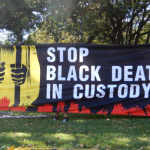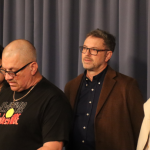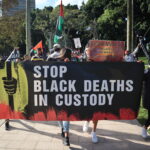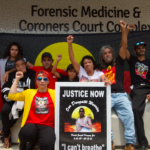Coronial Inquest Into First Nations Teen in State Care Triggers Concerns of Systemic Abuse
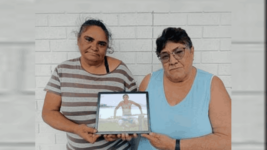
The recent Coronial inquest into the 2018 death of George Campbell heard that the Yuin Dunghutti and Tharawal teenager, who’d spent the majority of his seventeen years in state care, had likely been a casualty of systemic abuses within the NSW child protection system.
Campbell went missing at Wallaga Lake located in the NSW Bega Valley Shire on 9 March 2018, and his body was found the following day near parked cars close by to the local Koori Village, and it’s considered the likely cause of death was the misuse of volatile substances.
The coronial inquest took place at Batemans Bay Local Court over 7 to 10 February, with NSW state coroner Teresa O’Sullivan set to release her findings on 9 June.
Amongst the evidence before the court, one witness testified that he’d reported his concerns to the Department of Communities and Justice regarding Campbell having engaged in volatile substance misuse, while it was heard that the teen had made two allegations of sexual abuse in state care.
The Campbell inquest also triggers broader issues around the forced removal of Aboriginal children from their families in this state, with the 2023 Productivity Commission report outlining that in NSW over the year to June 2022, 44 percent of all children in out-of-home care were First Nations kids.
State care neglect
“The concern around DCJ is the support and care that could and should have been provided to George, and what they did provide and what they could have provided in the two years before his death,” National Justice Project solicitor Karina Hawtrey told Sydney Criminal Lawyers.
“Some of the issues raised were the department’s awareness of volatile substance misuse, and the mental health and healthcare support relevant to those kinds of factors around substance misuse,” continued the lawyer, who represented the teen’s mother, Karen Campbell, during proceedings.
George was placed in state care at the age of seven, and by the end of his seventh year in the care of his initial non-kinship carer, the relationship between them had broken down. And after time spent in various refuges, he had shown signs of improvements on being placed in kinship care.
During the inquest, evidence emerged that DCJ hadn’t adequately communicated with George’s kinship carers, that the department had failed to act on reports regarding his substance misuse, and nor had there been any informed handovers when new caseworkers took over.
“Also, particularly for the family,” Hawtrey added, “there were concerns about the lack of communication they had with George over the months before his death and what they felt was a lack of involvement in George’s life while he was in state care.”
Family is culture
The removal of First Nations children by DCJ is a contentious issue, with statistics such as last year’s 44 percent of children in state care being Aboriginal, whilst Indigenous kids only make up 6 percent of the state’s populace under the age of 19, being labelled the continuing stolen generations.
The National Justice Project raised Professor Megan Davis’ 2019 Family Is Culture report in relation to Campbell’s death, as it details “the lack of cultural competency and trauma-informed approaches” involved in the strategies DCJ takes to the removal of Aboriginal children from their families.
Davis, a Cobble Cobble woman of the Barrungam nation, inquired into the “high and increasing” numbers of First Nations children being removed and she found that a key issue was that DCJ has abandoned the First Nations placement principle to a culture of compliance and risk management.
Section 13 of the Children and Young Persons (Care and Protection) Act 1998 (NSW) contains the Aboriginal and Torres Strait Islander child placement principles, which means that kinship placement should be a priority, while placing First Nations children in non-Indigenous surroundings should be of last resort.
And while George spent the last years of his life with his great aunt Marion and uncle Paul, the position of the Campbell family was that most of his problems were as a result of the time he spent in the care of non-Indigenous carers.
Family is Culture made 125 recommendations, but as Hawtrey, a Gamilaraay woman, underscored, such recommendations are often “only as good as the paper they’re written on unless they’re implemented”.
Culturally-safe placement
“Our family wants to know what happened to George and whether there were any failures in the care he received in the lead up to his death,” Campbell’s mother, Karen, said in a statement after the first day of the inquest. “George was a loved member of our family.”
As for desired reforms, Hawtrey said that advocates would like to see birth parents more involved in the lives of their children whilst in state care, rather than that being confined to annual updates, and that the Family Is Culture recommendations are implemented in their entirety.
“We would like to see Aboriginal kids, if they’re not able to be placed in direct family care or parental care, placed with extended family following the Aboriginal placement principle,” Hawtrey said in conclusion.
“There were multiple opportunities for George, as his great aunt and uncle were around for many years before he was placed with them. So, we would like a real push on that.”




